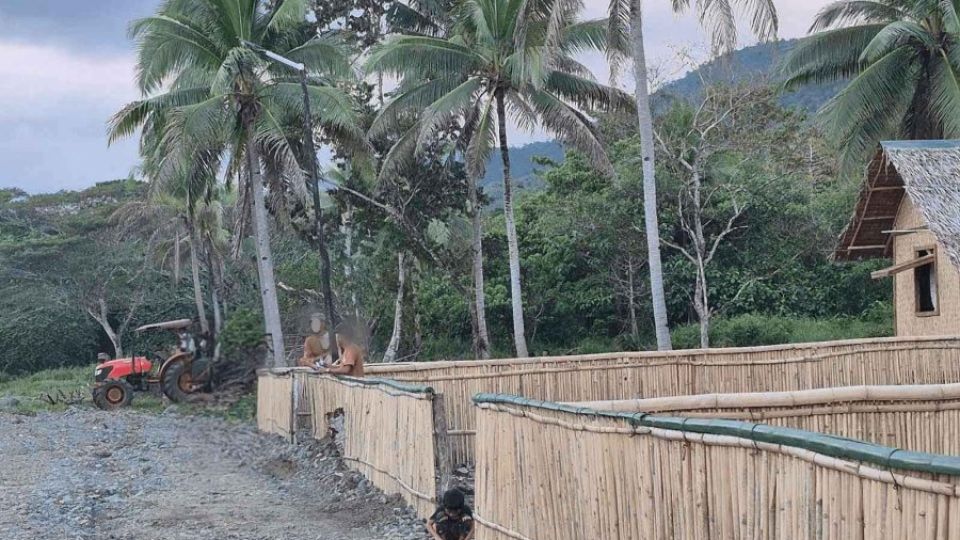February 18, 2025
PUERTO PRINCESA – Five-year-old Buboy plays outside his grandparents’ house, a humble home made of bamboo, pawid (palm leaves), and sawali (woven split bamboo), unaware that he lives in a unique community within the confines of a prison.
He lives with his grandparents because his mother is working in Manila. Their daily life mirrors that of a typical family — his grandfather goes fishing every morning and tends to their backyard farm in the afternoon while the grandmother does home chores.
However, in this case, only the grandmother leaves the community for work or to sell their farm produce because the husband is serving a prison sentence — life imprisonment, 20 years of which were already spent.
They are one of the 10 families inside Barrio Libertad, a community of persons deprived of liberty (PDL) living with their families inside the Iwahig Prison and Penal Farm (IPPF).
Nestled in the heart of Puerto Princesa City in Palawan, IPPF is one of the world’s most extensive open-air correctional facility established in 1902 and became a “free-living” penal institution in 1906.
The place spans 28,328.64 hectares. It currently houses around 5,000 PDLs, almost half of whom are already serving minimum prison sentences or have 10 years or less remaining in their prison terms.
Deputy Superintendent for Operations Renante Anas said only qualified inmates could live with their families inside IPPF, meaning that one should have served over 70 percent of their prison term — or only have 10 years or less remaining in their sentence — with a non-tarnished Good Conduct Time Allowance (GCTA).
Each qualified PDL is allotted a plot of land to build their house with a spacious backyard to cultivate a small farm.

Starting from scratch?
Constructing a house in Barrio Libertad is a community effort with access to natural resources.
PDLs help each other build the traditional bahay kubo structures.
A PDL who worked as a carpenter before his incarceration takes the lead in the construction.
If a house is already available — left behind by a recently released PDL — it is assigned to the next qualified applicant.
Once the house is built, the family will be allowed to move in. The family will receive four kilos of rice weekly and will be given seedlings to start a farm.
The PDL can also receive a few parawakans, a kind of native chicken.
“Parawakans can raise additional income for PDLs, especially those with family,” technical inspector Teddy Martin said.
“For your information, native chicken is very expensive here. A lightweight parawakan can be sold at P250 per kilo but once it is roasted, it could fetch a price of up to P600. This is very helpful to our PDLs,” Martin added in a mix of English and Filipino.
“What they harvest here belongs to them. However, their husbands are not allowed to leave. But their wives can go out. They can work or sell their harvest outside,” Anas said.
READ: Iwahig Prison expands agri production, boosts inmate skills and revenue

Typical day for Barrio Libertad residents
According to Buboy’s grandmother, her husband goes fishing after which he tends to their backyard farm.
“We only started tending to our backyard farm because we have just moved in,” the grandmother said.
Another resident said they were waiting for their daughter, who wanted to apply as a teacher inside the prison facility.
Schools within the penal farm
Children of prison officials and PDLs can go to school inside the prison facility.
“They are classmates,” Anas said.
Anas, who hails from Iwahig, said he himself studied within the facility with classmates who are kids of prison employees and PDLs.
“Many of them now have a good life,” he said.
Other PDLs besides Libertad residents
The other PDLs work as farmers in the rice paddies, the cashew and corn farm, and the coconut plantation, while others are in charge of the livestock and handicrafts.
Each PDL earns P500 per day.
Superintendent Gary Garcia said they have a tie-up with the Department of Agriculture (DA) and the National Food Authority (NFA) where they can sell the farm produce.

One hectare barrio
Barrio Libertad was established in the early 1980s, but it became idle and was revived only in 2023.
The Bureau of Corrections (BuCor) has allotted one hectare for the barrio.
It has its own irrigation system and access to the forest and river areas.
However, the downside for the barrio is the lack of electricity. Lighting comes from solar-powered lamps installed in posts.
Still, the PDLs are more than grateful for what they have been receiving.
Buboy’s grandfather said in Filipino: “It seems like we’re not in prison.”
“It’s better here than going back and forth for visits with limited time. Here, we can make a living and be together,” his wife said.
The goal of Barrio Libertad is to prepare the PDLs for their reintegration to society.
But what if the PDLs do not want to leave?
It’s not allowed, Anas said.
“We should give others a chance to live within Barrio Libertad. “We are for correction and reformation. We prepare our PDLs for their reintegration into society,” he added.
According to him, prison officials inform the local government units about the PDL to help him or her succeed in reintegration and find their own livelihood.
Delegates of the 2nd Association of Southeast Asian Nations (ASEAN) Regional Correctional Conference will visit the IPPF, including Barrio Libertad.
BuCor Director General Gregorio Catapang Jr. said they would showcase what they had been doing within the facility.
“Hopefully, they will adopt the system in their own country,” he told reporters.


